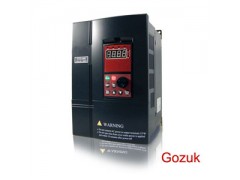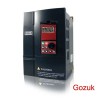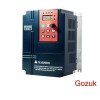Saying that this condition exist during deceleration is often true, but a little misleading. Power is fed back from the load to the bus any time the motor is regenerating, meaning that it is producing braking torque or torque in the opposite direction of current rotation. It's common for this to happen while decelerating a massive load, but can occur at constant speed, or even while accelerating if the load conditions are that way, for example imagine a axis lowering a load vertically and partially or wholly without a counterbalance. The load will try to run away, and the VFD is trying to maintain the commanded velocity. This is called an "overhauling load"
If you are just bring the fan up to speed slowly and do not intend to vary the speed during operation try a Soft Start device. It's cheaper and less complicated then an AC drive. It should stop the hum at start up and save on the electric bill if the fan is starting in a Peak Demand billing period. If you want to keep the ac drive is there a reason why the fan can not just operate through the ac drive?
Conversely, on a horizontal axis with significant friction, you may be motoring (normal operation, torque in same direction as motion, opposite of regenerating) even while decelerating and not have bus voltage issues.
So, is this motor and the one that never faults driving exactly the same type of load? Or is this one more likely to encounter an overhauling load and thus be regenerating? Is it set for a more rapid decel ramp than the other VFD?
Now I don't know why your VFD is faulting on a lower than expected bus voltage, but perhaps there's some problem in the sensing circuit, or maybe the fault trip is faster than the number that's being recorded.
With any 2-speed motor the hp rating will be lower when running at the low speed. Generally an AC drive would need to have the HP programmed for each speed. Usually only one HP parameter can be programmed at a time in a VFD.
Yes the 2-speed contactor is like a reversing motor starter except for how the jumpers connect.
As the base speed of a motor is exceeded the torque is lowered based on the speed. Horsepower is a combination of TORQUE and RPM. As the rpm increases the torque goes down. Remember that the motor has a definate amount of HP so if you need more torque at the higher rpm, you simply may need a larger motor. As the rpm is doubled, in many applications, the HP requirement goes up 4 to 8 times. more...




